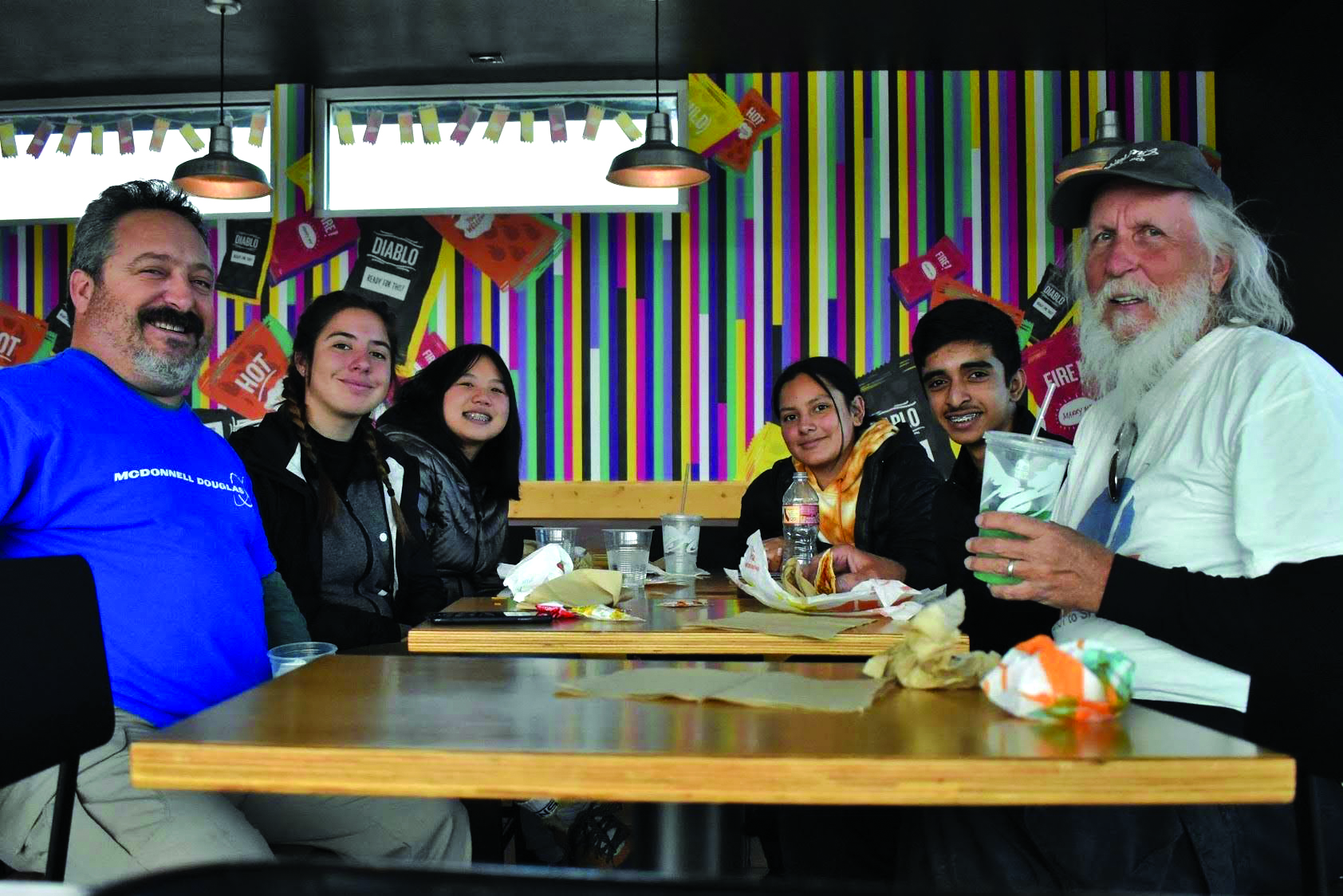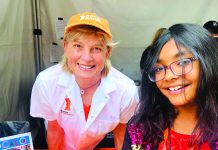
This story starts off just as many do: with a unique idea. There are many things that you would expect high schoolers to think about these days — from video games to the latest meme to what Kim Kardashian wore at dinner last night — but one thing that won’t pop up on one’s radar are weather balloons.
Yet, in Aug. 2019 on the campus of Utah State University in small town Logan, Utah, that was just what Culver City High School junior Sophie Doumitt was thinking about. Doumitt, the daughter of the Director of Innovation Development in the iLab at The Aerospace Corporation, was attending the SmallSatellite Conference — the internationally recognized premier conference for small satellite technology — with the CCHS Robotics team, and noticed a trend of shrinking technological investment in small satellites, so she decided to look deeper into it.
What she ended up finding became the launching point for a brand new idea for herself and the school.
“I found that a high-altitude balloon project would be less expensive and easier to implement, while providing a lot of similar experience, including understanding the payload, launch, location tracking, and positive lift,” Doumitt explained. “Once I knew what I wanted to do, I presented the idea to the Robotics Team in September, and got a small team of students interested.”
It didn’t just happen with a snap of the fingers though. Doumitt’s idea needed to be thoroughly planned out to convince people that this was worth investing time in.
“At first, it was difficult to get members because students were busy and at that point it was only an idea,” Doumitt remembered. “I then wrote out a proposal and plan that we could follow, with a goal to launch by the end of the year. This made it easier for students to say yes.
Doumitt and the three interested students — junior Zohaib Ahmed, senior Diana Martinez, and junior Nia York — ended up branching off from the Robotics team to form the Culver City High Altitude Balloon Team.
Kicking things off to start the 2019-2020 school year, the group met as a normal club does, but the perparations for the December launch began soon after the SmallSatellite conference was over.
Doumitt brought her father on to help serve the team as it’s primary mentor, and the team planned meticulously well in advance of the planned launch date.
“The project started in late August and launched in December. We worked with our primary mentor to put the project plan, schedule and budget together. We then put together a GoFundMe campaign where we raised most of the funds required for our experiment.”
Almost everything requires an investment, and launching technology in the air is certainly one of those things.
“Some of the key components came in a kit and we also had to find and bring together a number of other supplies and sensors including the GoPro camera, an FAA map, the helium container, a subscription to a satellite communication service, and a payload scale in addition to the GPS tracker, the flight computer, and the balloon, which came as part of the kit.
Additionally, every possibility and variable had to be accounted for. The team spent five to six hours a day working in the last week before launch during the school’s winter break.
“We had to research optimal conditions for a balloon launch, which required an understanding of varying wind conditions at different elevations. There ended up being a lot of work in assembly, set-up, calibration, testing and finally launch-day set up and recovery. We needed both mentors and our whole project team to make it happen.”
On top of that, there has to be a way to feasibly recover the balloon. Doumitt says the mentors were invaluable in deciding a launch location. They ended up deciding on an area just south of Kramer Junction in San Bernardino County.
But even with all of this preperation, there is a certain variability that you cannot control. For this launch, Doumitt says the retrieval of the balloon was still an arduous task.
“We were nervous,” Doumitt recalled. “We were going off into the unknown, and it was far away, but we really wanted to get it back. We wanted to see how high it went and to see the temperature data, the video, and all of the other information collected.”
“But we knew we didn’t have much time to get it and come back before dark,” she contiunued. “It ended up being a lot harder hike than anybody expected, over difficult terrain. It was fully dark when we got back after over 12 miles and 6 hours of hiking.”
For Doumitt and the team, it was all worth it.
“In the end, it was an exhausting but triumphant return.”
But this isn’t the end of the endeavors of the High Altitude Balloon Team. Doumitt says the team next hopes to enter a rocket launch competition slated to take place this summer.
For Doumitt, the passion for technology runs deep, seemingly passed down to her from her father. She hopes to continue pursuing these kinds of systems, and can see herself following in her father’s footsteps with a career in “advanced tech in aviation, space, computer systems, autonomous vehicles and other related technologies.”
“I like the opportunity to be technical but creative in building something that can really work and be valuable,” Doumitt said. “The idea that you can create something that can tell you about the environment that it’s in or traveling through, for example, where is it, how high it is, how cold it is, how fast is it moving, etc. is amazing. And the fact that this information can be used by a lot by so many different people, like for farming, environmental protection and other uses, makes it feel all the more valuable.”












